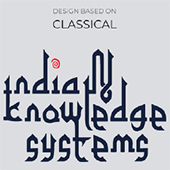[1] 1978. How a Child Thinks. Plume.
[2] 2014. The Cambridge Handbook of the Learning Sciences (2 ed.). Cambridge University Press. DOI:
http://dx.doi.org/10.1017/CBO9781139519526
[3] Sashiranjan Akela. 2021. Promotion of Indian Knowledge System – A blend of ancient learning system with contemporary practices in the new age of information. (2021).
https://www.mynep.in/
[4] Niti Ayog. 2022. Atal Innovation Mission (AIM). (2022).
https://static.pib.gov.in/WriteReadData/specificdocs/documents/2022/feb/doc202222519701.pdf
[5] Dimple Bahl. Untangling the Gridlock.
[6] Singanapalli Balaram. Design Pedagogy in India: A Perspective.
[7] Honey Bee. 1996. HoneyBee: Scouting and Documentation. (1996).
http://honeybee.org/scout.php
[8] Nitya Chablani. 2016. What do graphic design and ancient Indian art have in common? (2016).
https://www.vogue.in/content/what-do-graphic-design-and-ancient-indian-art-have-in-common
[9] Philip Chambers. 2020. Artificial Intelligence for Learning Design: Potential Uses. (2020).
https://blogs.oregonstate.edu/inspire/2020/07/27/artificial-intelligence-for-learning-design-potential-uses/
[10] GSD. 2019. Innovative Ways of Teaching Design. (2019).
https://www.gurukulschoolofdesign.com/blog/innovative-ways-of-teaching-design
[11] Anil Gupta. 1996. The Honey Bee Network: Voices from Grassroots Innovators. (1996).
https://www.culturalsurvival.org/publications/cultural-survival-quarterly/honey-bee-network-voices-grassroots-innovators
[12] Yasmin B. Kafai and Mitchel Resnick (Eds.). 1996.Constructionism in Practice: Designing, Thinking, and Learning in a Digital World. Lawrence Erlbaum Associates, Mahwah, NJ.
http://www.amazon.fr/exec/obidos/ASIN/0805819851/citeulike04-21
[13] Ozlem ULU KALIN. Creating Interactive Student Workbook for Primary Education Social Studies Class and Researching Its Efficiency.
[14] Avadhesh Kumar Singh Kapil Kapoor. Indian Knowledge Systems.
[15] Dr. Pragya Khanna. 2020. Traditional Indian knowledge systems: A National Treasure. (2020).
http://www.earlytimes.in/newsdet.aspx?q=292925
[16] Jonathan R. D. Kuhn. An Interactive Workbook For Internet and Classroom Students.
[17] Ineta Luka. Design Thinking in Pedagogy.
[18] Rully Charitas Indra Prahmana Marfilinda Atma Sari Subekti. Developing Interactive Electronic Student Worksheets through Discovery Learning and Critical Thinking Skills during Pandemic Era.
[19] Charu M Maurya. 2021. Ancient Indian ergonomics wisdom and its contemporary significance.
[20] Harsh Mehta. Influence of Bauhaus on Design Education in India.
[21] Robert Moody. 2017. Alice Boner and the Geometry of Temple Cave Art of India. 219–231. DOI:
http://dx.doi.org/10.1007/978-3-319-57259-8_13
[22] Ministry of Human Resource Development. 2020. National Education Policy 2020. (2020).
https://www.education.gov.in/sites/upload_files/mhrd/files/NEP_Final_English_0.pdf
[23] Ministry of Human Resource Development. 2021. Stimulating Indian Knowledge System, Arts and Culture.
[24] Seymour Papert. 1993. The Children’s Machine: Rethinking School in the Age of the Computer. Basic Books, Inc., USA.
[25] Bhumika Popli. 2016. We have been ignoring our design heritage while trying to ape the West. (2016).
https://www.sundayguardianlive.com/art/4038-we-have-been-ignoring-our-design-heritage-while-trying-ape-west
[26] Edward James Ravi Poovaiah, Ajanta Sen. A blueprint for design education and practice: using emerging technologies and traditional knowledge systems to widen design’s constituency in India.
[27] Iasef Md Rian, Jinho Park, Hyunguk Ahn, and Dongkuk Chang. 2007. Fractal geometry as the synthesis of Hindu cosmology in Kandariya Mahadev temple, Khajuraho. Building and Environment 42 (2007), 4093–4107.
[28] Jonathan Sim. 2021. How to design unforgettable class activities that help students learn better. (2021).
https://www.timeshighereducation.com/campus/how-design-unforgettable-class-activities-help-students-learn-better
[29] Rajiv Singh. 2020. Stimulating Indian Knowledge Systems, Arts and Culture.
[30] Kohei Sugiura. 2008. Graphic Design Methodology and Philosophy. Kohei Sugiura.
[31] Lawrence Surendra. 2021. The Knowledge Systems Debate in India. (2021).
http://www.dialogue.ias.ac.in/article/21853/21853-the-knowledge-systems-debate-in-india
[32] Nalini Thakur. 2002. The Architectural Knowledge Systems Approach. (2002).
https://architexturez.net/doc/az-cf-21179
[33] Kirti Trivedi. 1996a. Fractal Architecture of Hindu Temples and Parametric Form Generation in Contemporary Architecture. Kirti Trivedi.
[34] Kirti Trivedi. 1996b. From Formless to Form – A methodology to make manifest the unmanifest according to Hindu Iconography.
[35] Kirti Trivedi. 2003. The Talamana System of India: A Measure for the Cosmic Order and the Cosmic Rhythm.
[36] Kirti Trivedi. 2010a. Maanen nirmite bimbe swayam abhati daivatam. Kirti Trivedi.
[37] Kirti Trivedi. 2010b. Roopartha Form and Meaning in Indian Visual Culture. Kirti Trivedi.
[38] Kirti Trivedi. 2010c. The Way of Asian Design: A Direction for Tomorrow. Kirti Trivedi.
[39] Jerome-Alexander van Wyk. Indigenous Knowledge Systems: implications for natural science and technology teaching and learning.
[40] K Vatsyayan. 1983. The Square and the Circle of the Indian Arts. Roli Books International.
Case Study Download:
• Teaching Design based on classical Indian knowledge system......
Other Links:
• Useful resource e-links related to 'Graphic Design'
• Visual Communication Design at IDC, IIT Bombay

